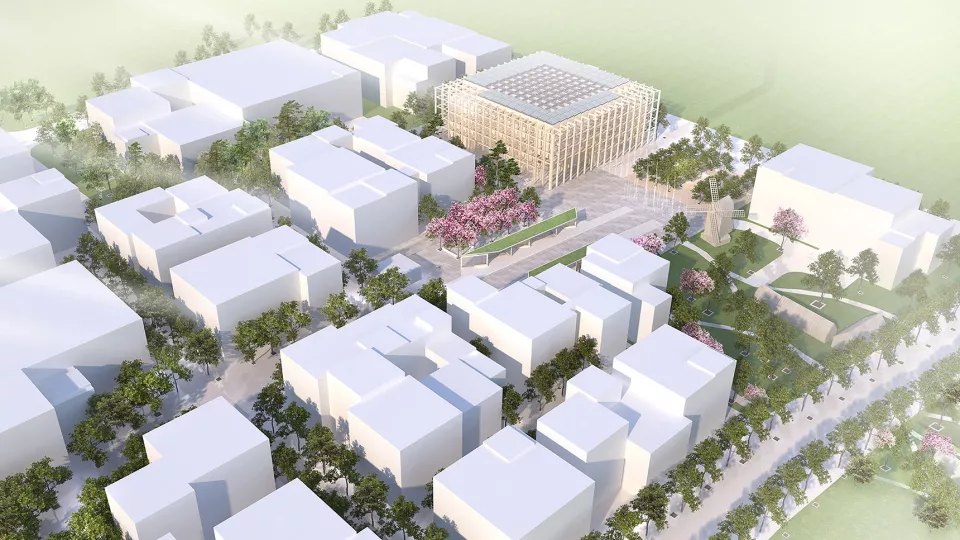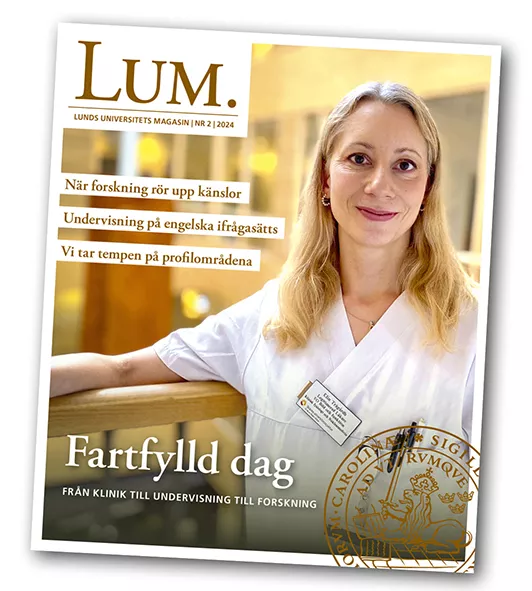Another person breathing a sigh of relief is Leif Bülow, who is in his fourth year as head of the department. These years have been marked by extensive discussions and agonising over the pros and cons of leaving the Kemicentrum building to move up to what will become Science Village, i.e. the part of Brunnshög which includes MAX IV, ESS and the area between the two facilities.
"It means a lot in terms of the work environment that we have now come to an agreement", says Bülow, who has 400 employees and around a thousand students affiliated with his department.
Possibility to share labs and staff with physicists
Among the students, resistance was initially strong and Bülow believes that they must be shown great consideration in timetabling so as to minimise travel between different campus areas. Among employees, there were doubts associated with increasing the distance from biology and medicine, subjects with which chemists interact a lot. On the other hand, they will end up so close to the physicists that it will be possible to share laboratories and perhaps teaching staff eventually.
"There will be major advantages in terms of collaboration on the administrative side as well", believes Bülow, who finds the entire project exciting with all the other organisations also showing an interest in establishing themselves in Brunnshög.
From scepticism to 'Wow! What fantastic opportunities'
Sven Lidin also encounters this interest, not only in business and industry – Lund University Hospital is also considering North Brunnshög as a potential site for its expansion.
"There has been a major change in attitudes everywhere, from scepticism to 'Wow! What fantastic opportunities'", he says.
But what will happen to the Knowledge Highway along Sölvegatan when the Department of Physics and almost the entire Kemicentrum building are emptied out?
"We absolutely want to avoid drain holes", says Lidin decisively, pointing out a number of crowded organisations that would benefit from the opportunity to expand.
As an example, he mentions the Centre for Environmental and Climate Science, CEC, with subject areas that are becoming increasingly important and attract investment. Not least within the EU, major grants can be applied for in these disciplines. There are also other organisations that are environment-oriented and could potentially benefit from new investments and co-location.
"And Biology itself is not going to shrink, but is growing as well", he says.
Collaborative advantages
He hopes that the collaborative advantages in Science Village, with shared laboratories, teaching premises and teaching staff for chemistry and physics, will lead to a reform of first and second cycle education.
"A lot has happened since my generation attended upper secondary school and there are many things we no longer have to teach – and a lot of new content that we should now include in teaching instead", says Lidin.
In Science Village, the teaching premises will be adapted to the new and flexible forms of teaching. There will be both general and specially designed teaching premises, explains Bülow, who is facing a major planning project together with his staff.
"There will be many working groups for various parts of the establishment", he says, "not to mention the comprehensive procurement process to follow."
The Department of Chemistry was last renovated several years ago and the idea is not to move the older equipment but rather to retire instruments and other laboratory fixtures at the time of the move.
"We would have needed to invest in new equipment anyway, even if we weren't going to move", says Bülow. The difference now is that the process will happen a little earlier.
A lot remains to be solved
However, a lot remains to be resolved before the establishment in Brunnshög is complete. The University Board must approve it, but the premises programme and organisational description produced for the board's April meeting do not really reflect reality as they do not include the Department of Chemistry. The 25 000 square metres planned for the Department of Physics now need to be more than doubled to accommodate the Department of Chemistry – and the projected 600 employees have now grown to 1 000.
The City of Lund is to approve a detailed plan for the area, including secure transport routes for sensitive material and hazardous liquids. Both a developer and a landlord are needed. The financing is still unresolved and it is hoped that donations plus public agency capital will cover the project.
One year ago, the board of the Faculty of Engineering decided to proceed with the establishment of a new NanoLab in Brunnshög and they will be first off the blocks. The year quoted is 2027, after which the rest of the departments and organisations are expected to join them. Sven Lidin is careful to use the word establish rather than move.
"This is not about moving an old organisation but about establishing a new one", he says.




